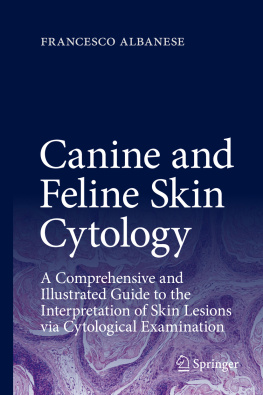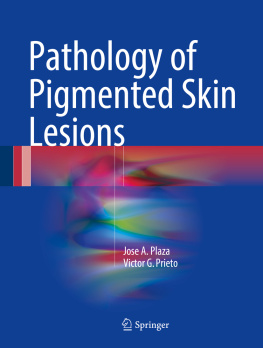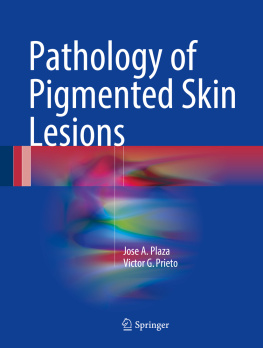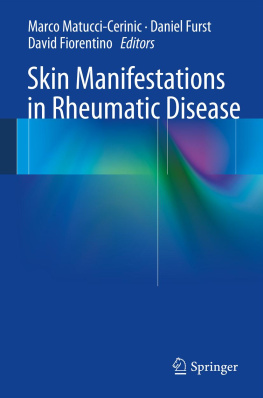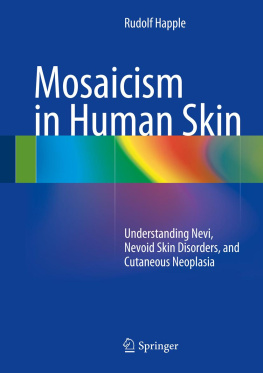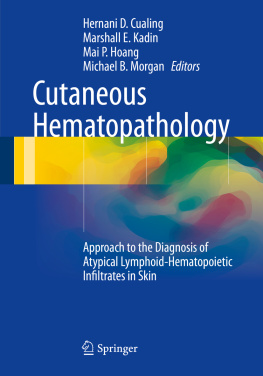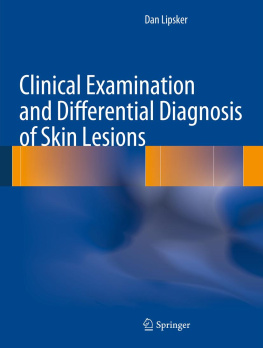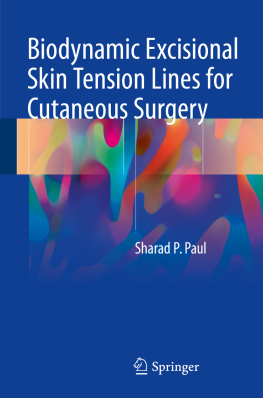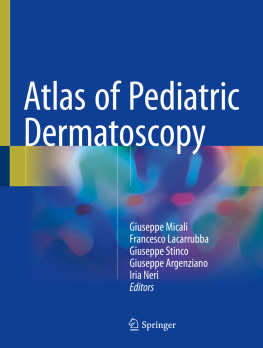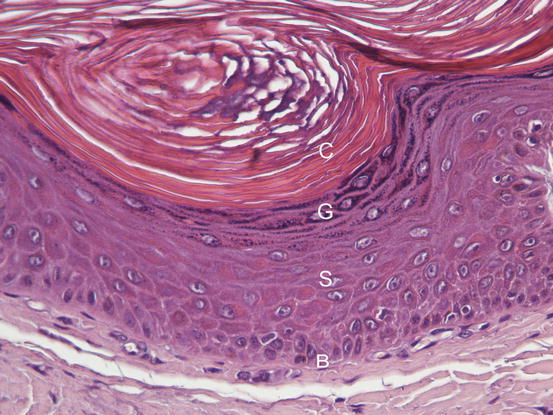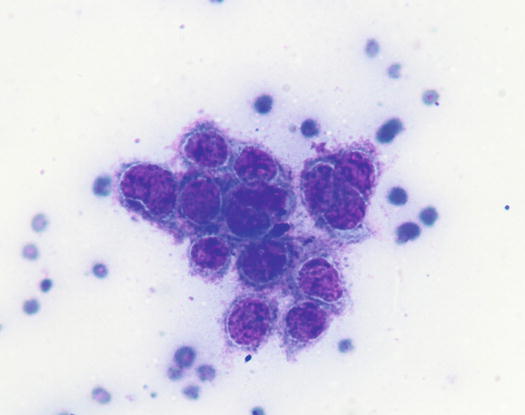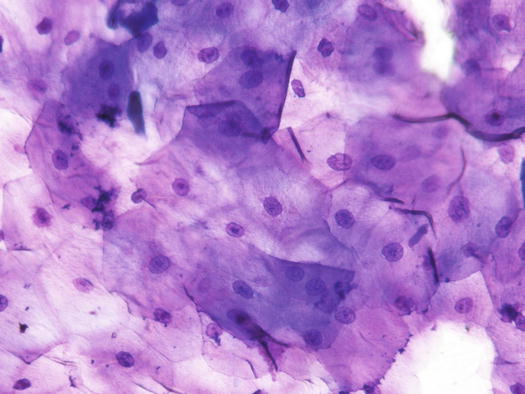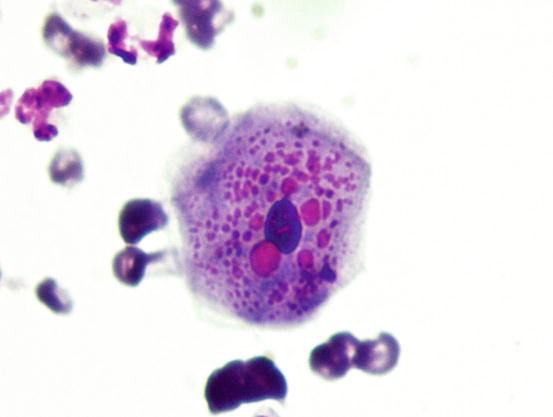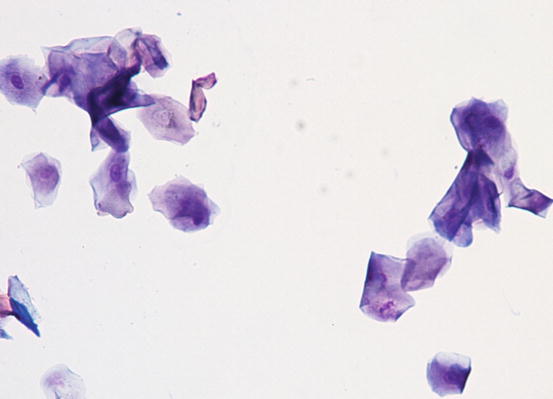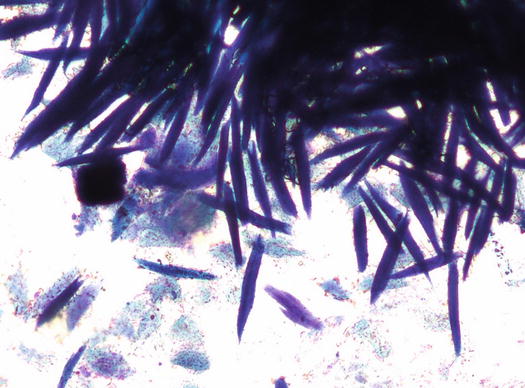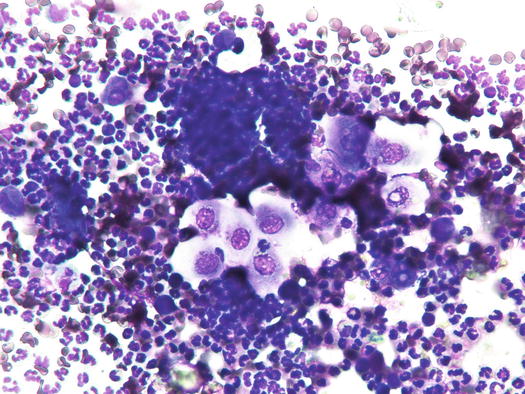Springer International Publishing Switzerland 2017
Francesco Albanese Canine and Feline Skin Cytology 10.1007/978-3-319-41241-2_1
1. Morphology and Function of Skin Cells
1.1 Introduction
In this chapter, the morphology of the cells that make the skin is discussed. To better interpret the cytological specimens collected from skin lesions, it is mandatory to know the morphology of the cells that compose the epidermis, the dermis and the subcutaneous tissue, in addition to the cells that normally reside in the dermis and finally, those produced from bone marrow that reach the skin via the bloodstream during inflammatory processes.
Anatomically, the skin is made up of three main different anatomical parts: the epidermis , the dermis with the follicular and glandular adnexa , and the hypodermis , also known as the subcutis .
1.2 The Cells of the Epidermis
More than 90 % of the epidermis consists of nucleated cells that mature to become anucleate and completely keratinised cells. The remaining cells comprise melanocytes and Langerhans cells (dendritic antigen-presenting cells), which are only detectable in the case of proliferative/neoplastic processes, which occur in melanocytomas/melanomas and in cutaneous histiocytoma respectively. As epidermal cells are mainly composed of keratin, they are named keratinocytes , which make up the four strata of the epidermis: basale , spinosum , granulosum and corneum ; because the latter is completely keratinised, its cells are called corneocytes (Fig. ).
Fig. 1.1
Histology of the epidermis: hyperplastic epidermis, in which the different epidermal layers are well defined: b stratum basale, s stratum spinosum, g stratum granulosum and c stratum corneum
Under normal conditions, it is possible to collect only a few corneocytes from healthy skin, as they are the only cells present on the surface of the epidermis as a result of the physiological keratinisation process.
1.2.1 Stratum Basale
The cells of the basal layer are the smaller among the keratinocytes and are also those less frequently observed on cutaneous specimens. They are cuboidal in shape in the tissue, but appear roundish when observed on cytological specimens; they measure 810 m, have round nuclei, sometimes with a single evident nucleolus, and a high nucleuscytoplasm ratio (N/C ratio). The cytoplasm is sparse and deep blue in colour. Sometimes, it can be difficult to differentiate between a basal keratinocyte and a non-activated histiocytic cell. Two cytological characteristics of the basal keratinocytes that help the cytologist to recognise them are the presence of a thin clear halo that is interposed between the nucleus and cytoplasm and they are usually arranged in clusters (only rarely singularly; Fig. ).
Fig. 1.2
Cytology of the stratum basale: a cluster of basal keratinocytes. Note the achromatic perinuclear halo
1.2.2 Stratum Spinosum
The cells of the spinosum layer are larger than basal ones, and are much more frequently observed as they are the most numerous nucleated cells of the epidermis. Spinous keratinocytes are large polygonal cells with angled borders and round to oval nuclei, usually central, with a lower N/C ratio than basal cells. The cytoplasm is large and of varying colours, which range from pale pink to sky blue and even dark blue (Fig. ).
Fig. 1.3
Cytology of stratum spinosum: large polygonal spinous cells with angled borders and central oval nuclei with single evident nucleoli
1.2.3 Stratum Granulosum
The cells of the granulosum layer are so called because they contain intracytoplasmic keratohyaline granules of different sizes and round in shape. The granules take on an eosinophilic colour when stained with Romanowsky type dye. The pink colour of the granules makes them easily recognisable and cytologically distinguishable from any other type of granule, pigment or microorganism, which can be detected on the surface of keratinocytes. The size of the cells is variable, but they are voluminous with a polygonal shape and a low N/C ratio (Fig. ).
Fig. 1.4
Cytology of the stratum granulosum: large polygonal keratinocytes with cytoplasm filled with roundish and eosinophilic keratohyalin granules
1.2.4 Stratum Corneum
The normal epidermal keratinisation process results in the formation of the stratum corneum , which is composed of keratinocytes that have lost the nucleus to become completely keratinised. For this reason they are also called corneocytes . The morphology of the corneocytes is highly variable and ranges from large polygonal, flattened, anucleate cells with angled borders, to deeply blue-stained cells with a lanceolate or papyrus-like appearance (Figs. ). Colour differences in corneocytes range from completely unstained cells to cells that are coloured in various shades of pink, purple and blue. These differences depend not only on the amount of keratin present in the individual cells, but also on the failure to dissolve ceramides, sphingosine and cholesterol, the normal constituents of the lipid film forming the skin barrier that are still present on their surface. The excessive presence of lipids can, in fact, reduce or inhibit the penetration of stains into the cells.
Fig. 1.5
Cytology of the stratum corneum: many anucleate keratinocytes (corneocytes) and few nucleated keratinocytes of the spinous layer
Fig. 1.6
Cytology of the stratum corneum: many lanceolate and deeply blue stained corneocytes
The cytological recognition of keratinocytes is very important, because in many cases their identification provides very useful indications, as occurs in specimens collected from pustules of animals suffering from pemphigus foliaceus (acantholytic keratinocytes). It should be stressed that knowledge of the normal morphology of keratinocytes can be very useful so to make a better interpretation, in the context of an inflammatory lesion, of the dysplastic versus neoplastic changes in the epithelial cells that allow malignancy to be rapidly suspected and histology to be performed more quickly (Fig. ).
Fig. 1.7
Cytology of dysplastic keratinocytes: note the alterations represented by nuclei with irregular profiles and pseudo-vacuolation

